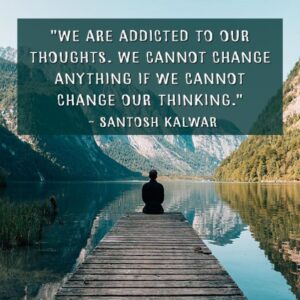Europe is full of beauty, culture, and history, but when you’re traveling with kids, the experience takes on a whole new shape. What you see and how you move through each day have to match more than just your bucket list. It has to match your child’s energy, attention span, and need for fun.

And when you get that balance right, something really lovely happens. You see the same places differently. Through their eyes, even an ordinary square becomes a place to play.
This article gives you thoughtful ways to keep your children engaged and happy as you explore Europe, so the memories you take home are filled with laughter and not just landmarks.
1. Mix Grown-Up Sights with Kid-Friendly Stops
Kids have shorter attention spans, so hours of walking tours or quiet museums don’t usually go over well. Instead, alternate between adult-focused attractions and things that are more hands-on or playful. For example, if you visit the Louvre in the morning, plan a picnic in the park afterward.
Look out for playgrounds tucked into city corners; they are lifesavers. Places like Madrid’s Retiro Park or Vienna’s Prater have wide-open spaces and rides that give kids a break from sightseeing. You don’t have to sacrifice your itinerary; you can just space things out. And yes, sometimes a carousel ride is worth more than another monument.
2. Give Them a Job to Do
Kids love feeling important. Let them carry a small backpack, be the group’s “map reader,” or choose where to sit for lunch. Simple things like taking a photo of something red in every city or spotting flags from different countries can make the day more fun.
If they’re old enough, involve them in the planning. Ask them which things sound fun in a city. Even better, let them pick one stop per day that’s all about them, whether it’s a zoo, a quirky museum, or even just an ice cream shop they saw in a guidebook.
3. Don’t Skip the Castles
Castles are one of the few sights that instantly grab kids’ attention. Unlike most museums or old churches, they feel magical and full of stories. Europe has plenty, but Neuschwanstein Castle in Germany really stands out.
This castle inspired Walt Disney when he designed Cinderella’s Castle. And once you see it, you’ll understand why. Set high on a hill and surrounded by forests and mountains, it looks like something out of a fairytale.
If you are planning a visit, booking Neuschwanstein Castle Tickets ahead of time is a smart move. The lines can get long, and no one wants to wait around with impatient kids. Some tickets include guided tours, which can make it more fun for everyone, since the guides often share cool facts and legends about the place. Certain options also offer free cancellation up to 24 hours before your visit, which is a relief if your plans shift.
A little planning makes a big difference. Neuschwanstein can easily become one of the most memorable stops of your trip, for both kids and adults.
4. Food is Not Just Fuel
You already know this, but it’s worth saying again: hungry kids are cranky kids. Always have snacks. Europe is filled with bakeries and street food stalls, so stock up throughout the day.
Let food be part of the fun. Try local treats like Belgian waffles, Roman pizza al taglio, or German pretzels. Eating becomes more than just a pit stop; it becomes something to look forward to.
Suppose they get to choose their own snack, even better. Giving them a say adds a little excitement to each stop. And honestly, trying local food is one of the easiest ways to connect with a place, and no museum ticket is required.
5. Break the Day Into Chunks
You don’t have to see everything. No one enjoys being dragged through ten sights in one day, especially not children. Plan for a slow morning, a big midday stop, and something flexible in the afternoon. Keep nights low-key. That might mean an early dinner or even a picnic in the hotel room.
Public transport can also help avoid those long walks that drain energy. Most cities have trams or subways that are easy to figure out, and kids actually enjoy the ride.
When the day is broken into chunks, it gives everyone time to reset and recharge. That makes the big moments easier to enjoy. And if you end up doing less than planned, that’s fine. Happy memories matter more than ticking boxes.
6. Add a Bit of Weird
Kids remember the odd things more than the famous ones. The leaning house in Amsterdam. Skeletons in the Paris catacombs. Or clocks that put on a show every hour.
Museums built for kids, like the Natural History Museum in London or Barcelona’s CosmoCaixa, make great detours. And even cities with no “kid attractions” usually have something offbeat to offer. Sometimes it’s just a funny-looking statue or a huge fountain to splash in.
These moments add spice to the day. They also make for the kind of memories your kids will still talk about years later. The quirky, unexpected things are often what stand out most in their minds. So don’t skip something just because it looks odd—that might be the highlight of their day.
7. Carry a Little Bag of Tricks
Always keep a few boredom-busters handy. A notebook and pencil, a deck of cards, stickers, or even a couple of tiny toys can go a long way while waiting for food or sitting on a train. If you have a phone or tablet with you, download a few kid-friendly games or shows ahead of time, just in case.
Also, don’t underestimate how much fun a simple travel journal can be. Let kids glue in ticket stubs, draw what they saw that day, or write one sentence about their favorite thing. It’s fun during the trip and becomes a keepsake afterward. These little tools don’t take up much space but can save your sanity when delays or downtime hit. And giving your child something to do makes them feel involved, not just along for the ride.
Final Thoughts
Traveling through Europe with children takes more effort, sure. But it also makes you see places differently. Castles become real. Fountains are made to splash in. And even a cobbled alley feels like an adventure when you’re holding a sticky hand and sharing a laugh. You don’t need a perfect trip. Just a trip full of small, happy moments. That’s what they’ll remember anyway.



